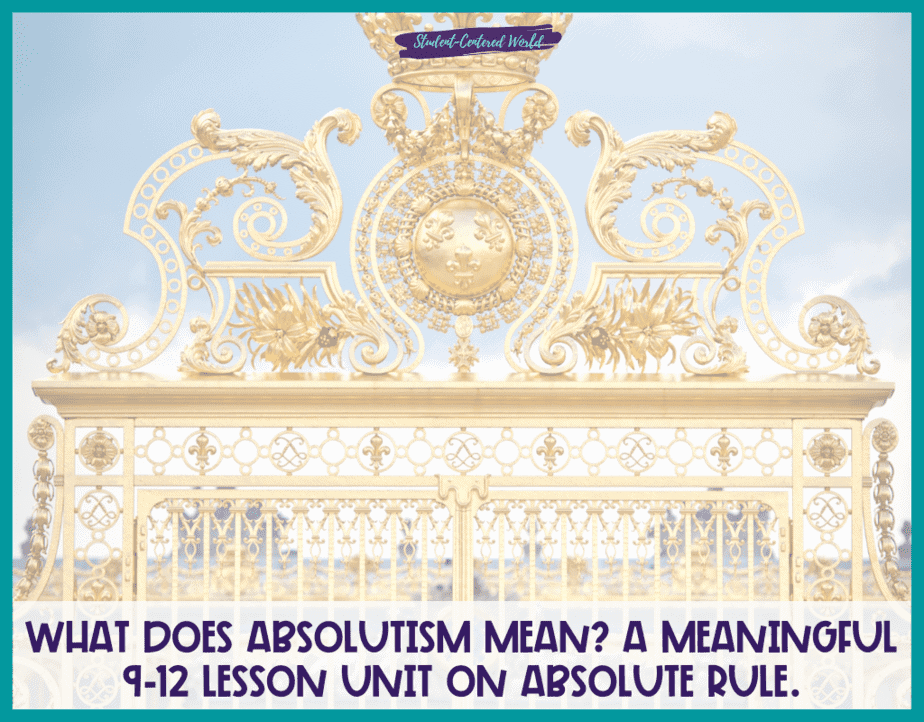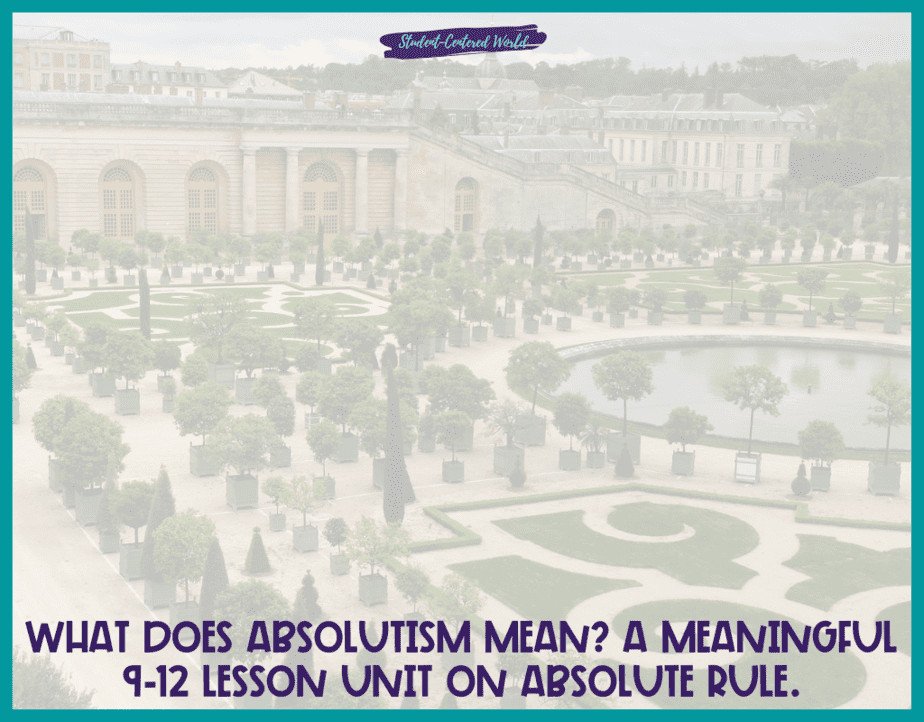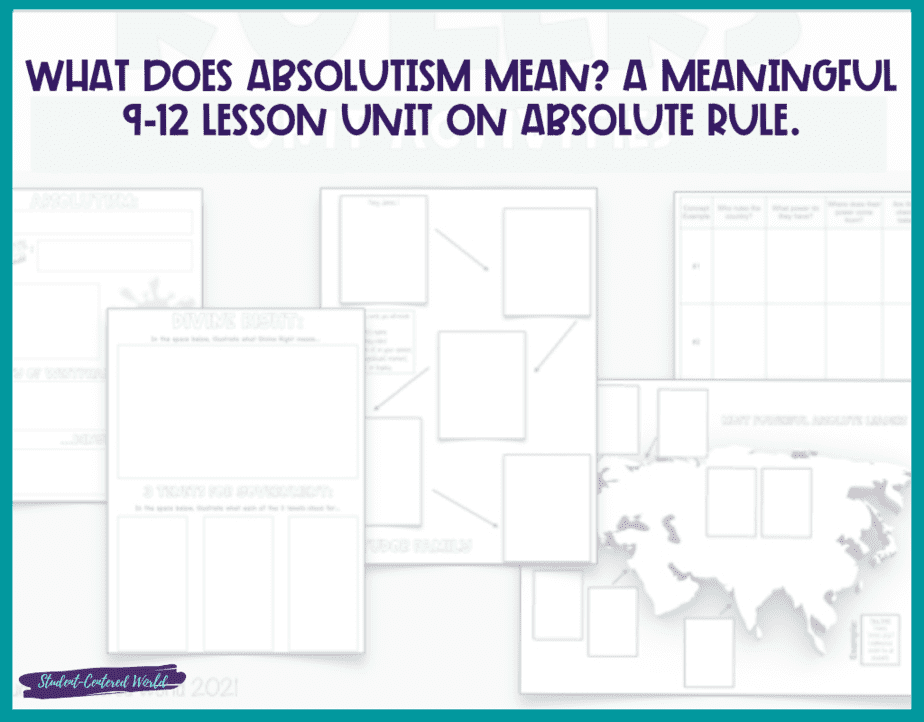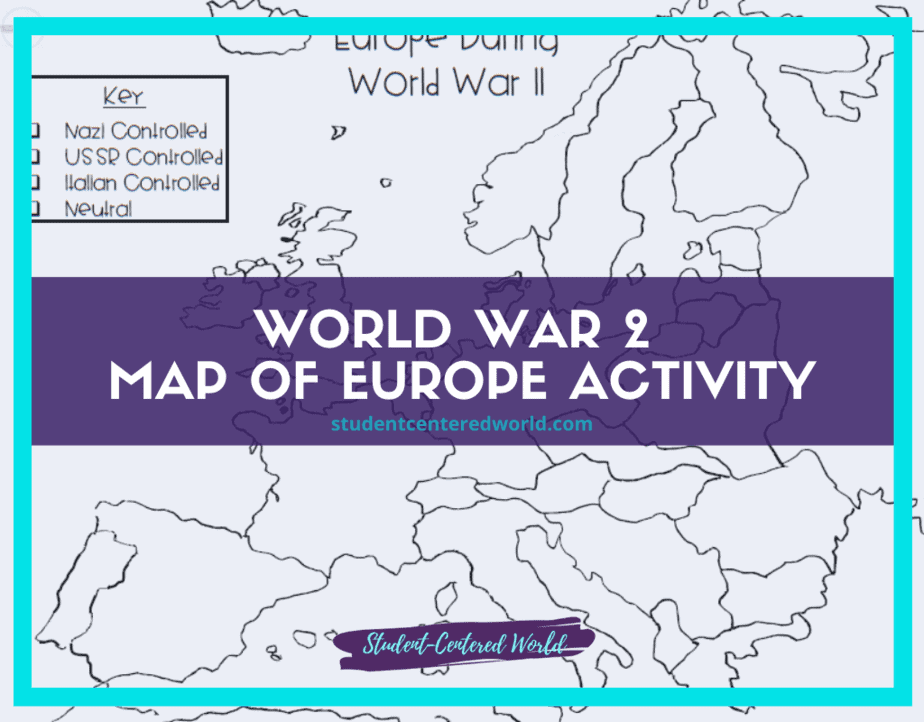What Does Absolutism Mean? A Meaningful 9-12 Lesson Unit on Absolute Rule.
When you’re trying to come up with a solid lesson plan or unit to answer “what does absolutism mean“, it’s no picnic. There are so many ins and outs to this topic in World History, yet we have a short amount of time allotted in our curriculums to go over it in any depth. The easiest way is to look at the topic from a macro point of view and have your students guide you from there.
It is important not to go “too big” when teaching a concept like Absolutism. Your students need to understand what it is and why it was. There are entire college courses on Absolute Rulers in history; we don’t need to go that in-depth in high school! As long as your students have a general idea of history and how it directly affected the world, you’re good. Everything past that is gravy.
What Does Absolutism Mean?
To understand how to teach the topic, one must really understand the root of what our students need to know. What does absolutism mean?
Absolutism can be defined as “the principle of holding certain political, religious, or other beliefs very strongly and not allowing disagreement with or criticism of them.”
Basically, it means that someone won’t change their mind about something, no matter what evidence they are shown to the contrary. In the Age of Absolutism, this defined the Divine Right of Kings and how they ruled over their subjects.
You must understand “Divine Right” to answer “What does Absolutism mean”, because, during this time in history, one directly led to the other. The Divine Right of Kings is the belief that kings rule with divine authority. It’s sort of like saying God chose them to be royalty, and therefore it’s blasphemous for any person (or another king) to overthrow or even question their actions; they are doing God’s work, after all.
This isn’t something that started during the Age of Absolutism, but it was the basis for almost every ruler during this time. It came directly from King Henry VIII and his break with Rome. The Pope refused to annul his marriage because he couldn’t produce a male heir to continue on with the Tudor bloodline. Henry broke away from Rome, established the Church of England as its head, and divorced his wife. In doing so, he also established that an English monarch had the right to break from the Catholic Church and form a new one if they had a disagreement with its leader.
Before Henry VIII, you would have had a hard time finding a King who wasn’t under the control of either the Pope or an Archbishop. This changed everything. In time, Parliament became less and less powerful as the monarchs wielded more and more power over them.

Turning This into a Lesson Plan
If you want to easily shorten this lesson plan or unit for “What does Absolutism mean”, have students pick a ruler during this time period and do a compare/contrast to see how their beliefs about absolutism shifted country they ruled over.
You could also require them to research what was happening in other countries at this time, and compare/contrast their absolutist beliefs with that of the ruler you choose. Henry VIII would be a great option because he’s one of the best known for breaking away from Rome and becoming an absolutist ruler.
While they’re looking up information on the Divine Right of Kings, have them do some research into what’s happening in other countries at this time. You can specifically focus on the Thirty Years War, which is where absolutists believe the Divine Right of Kings came into its own.
The biggest thing you want to stress in this unit is that this belief was not just relegated to kings. The people who lived under their reign were expected to follow their lead and accept whatever happened, no matter how terrible, because it came from God.
Believe me when I say that this is a very simplified view of absolutism. It can get extremely complicated, especially since you have to walk the fine line between historical accuracy and student comprehension. When you’re finished with your unit on “What does Absolutism mean”, try giving them a lesson plan on The French Revolution. You’ll be able to see some of the influences of absolutism in the way people viewed the monarchy during this time. Of course, the Age of Enlightenment leads right into the Age of Revolutions, but that is a subject for a different time.
The bottom line is that you need to spend some time with your class working out exactly what they need to learn about absolutism before you even think about writing up a lesson plan for them. If you don’t, there is a good chance that the unit on “What does Absolutism mean?” will fall flat on its face because not enough students will understand what’s happening.

“What Does Absolutism Mean?” Lesson Ideas
With all of this in mind, here are some ideas for putting together your lesson plans on “What does Absolutism mean?”
Topic: What does Absolutism mean? Lesson plan ideas to expand on the topic.
#1 – Define absolutism and show examples of it from history. Here you’ll want to go into more detail than I’ve given you so far because this is where so many students get confused, especially when they’re trying to compare and contrast absolutism with other types of governments or belief systems.
#2 – How did the Divine Right of Kings contribute to the advent of absolutism? This is another place where you can really get into some complicated history, but it’s more important for students to understand what led up to the Age of Absolutism.
#3 – Create a visual timeline of the Divine Right of Kings and the Age of Absolutism Show students where other events were happening in the world that also helped influence this time period. If you can, get into some information about how The Thirty Years War influenced absolutist beliefs.
#4 – Compare and contrast different forms of government. Once you’ve got a good idea of what absolutism is, it’s important to show students how it compares to other kinds of governments. You can even break down the types of governments into two main groups: non-absolutist and absolutist.
#5 – Compare and contrast absolutist and non-absolutist countries. Students should also get a good idea of how different countries were ruled during this time period depending on whether or not they thought the ruler held absolute power over their country. Some examples students could look into might be England, France, Spain, Ottoman Empire, Florence under Lorenzo de Medici, United Provinces of Netherlands.
As you can see, there are a lot of things to consider when putting together lesson plans on “What does Absolutism mean?” As always, the first step is research. Make sure you really understand what absolutism is before you even think about writing up your first lesson plan.
What Does Absolutism Mean: A “Made for You” Unit Plan
“Absolute Rulers” is a great unit plan that spells all of this out in easy, hands-on activities that get the baseline knowledge across to your students while still not only giving them opportunities to dive deeper into the content but also staying within the time constraints of your curriculum.
Watch the video below to check it out:
It includes five different activities that break down the answer of “What does Absolutism mean?”, as well as the Divine Right of Kings, and various absolute rulers (including a map activity), with an extended look at the Tudor and Stuart Dynasties. Answer keys are also included as well as ideas for some extension activities to help clarify even further.
Assignments like these are key to helping your students understand the Age of Absolutism because they clearly define what absolutism is, how it formed, and its impact on politics. It also gives a really solid foundation for then understanding the Enlightenment and how that led to and was intertwined with the Age of Revolutions.
This unit plan will take roughly a week to finish but could take a little more or a little less depending on your students. It also could be used as an introduction to the topic, or as a review before your end of unit assessments.
The PDF file should print out perfectly for you, but if it doesn’t, let us know. If you have any suggestions for other units please leave them in the comments below! Also, check back soon because we’ll be uploading more unit plans very soon!







